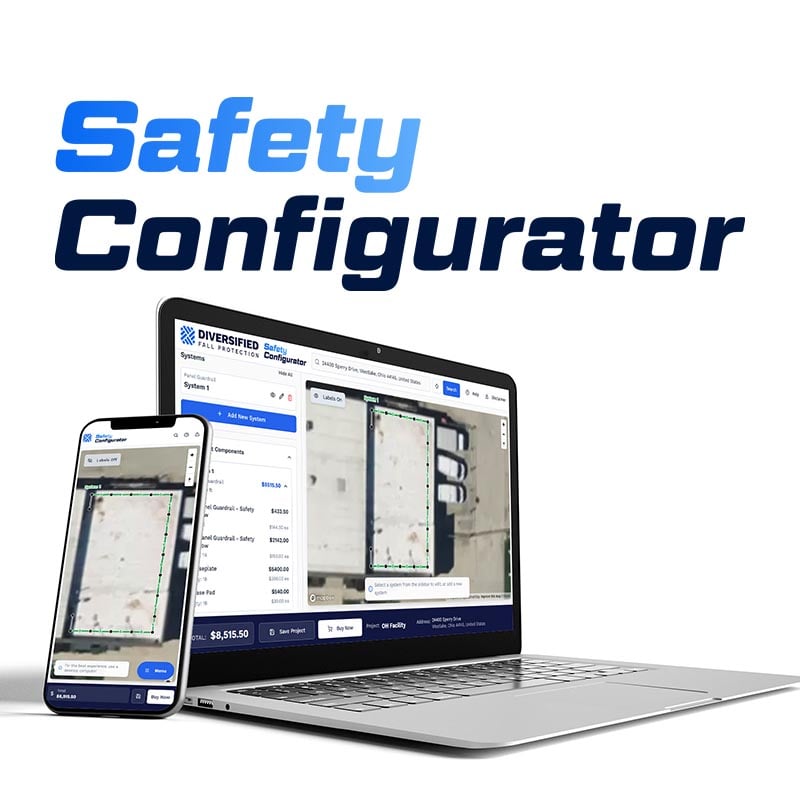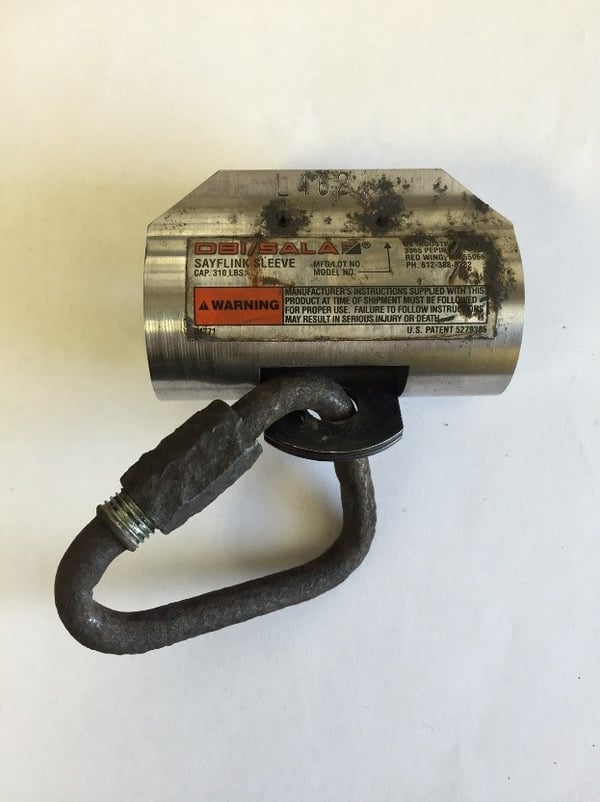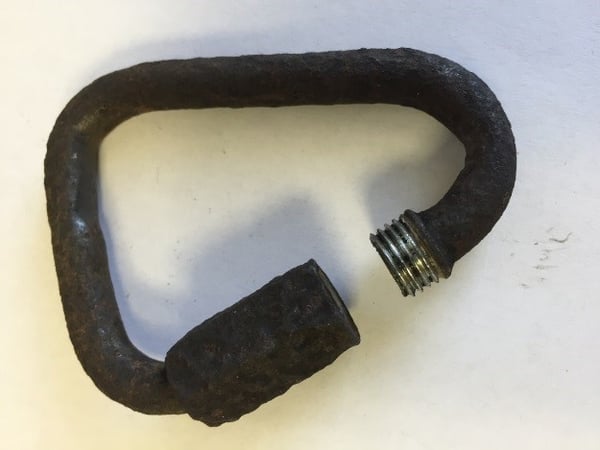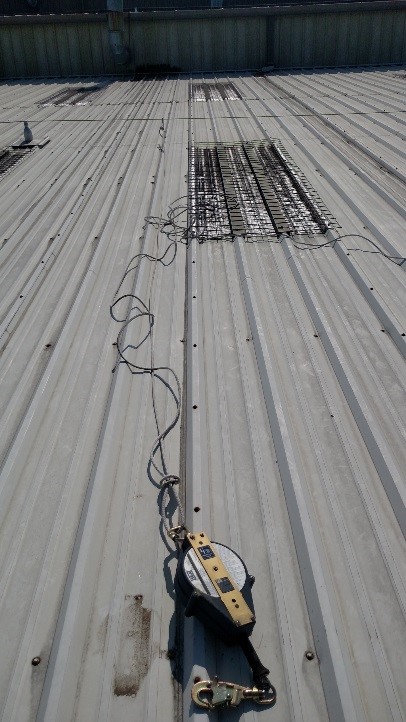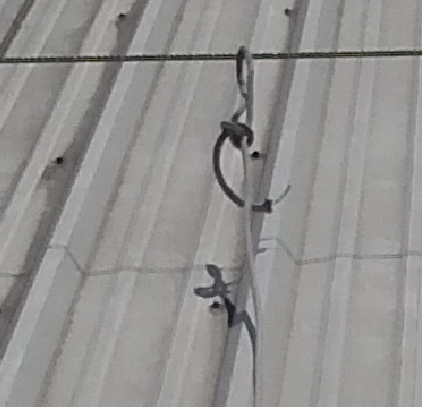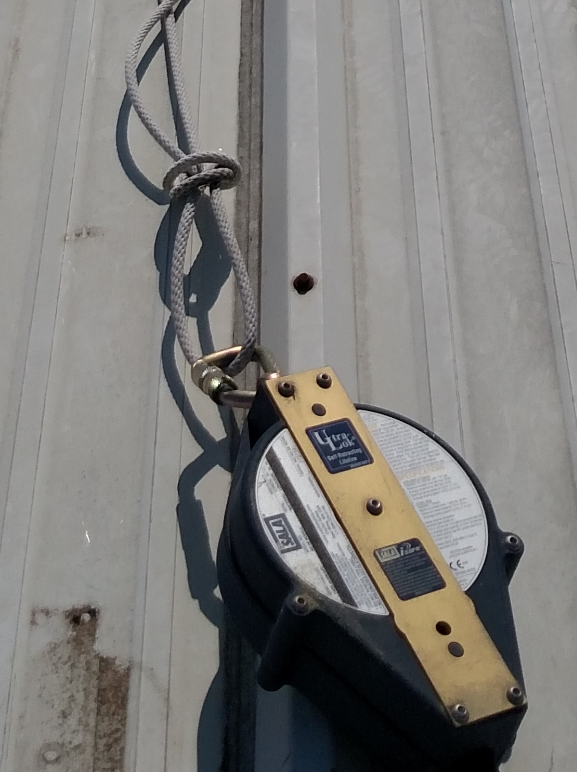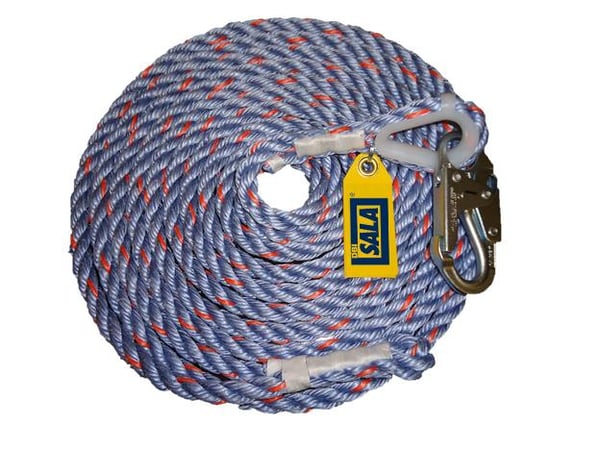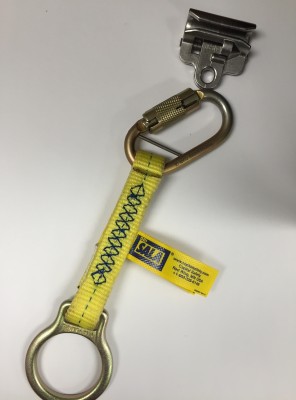When Was Your Last Fall Protection System Inspection?
Are you wondering how long it has been since your last inspection or are you struggling to justify the cost of inspecting your fall protection systems? If you answered yes to either of these questions, remember, engineered fall protection systems consist of a myriad of components that wear out over time. What’s more, unauthorized modifications can compromise system safety. This post uses unsafe conditions discovered in the field to demonstrate the importance of annual system and PPE inspection.
Our first field finding—the heavily corroded carabiner attached to the lifeline shuttle shown below is case in point. If you look past the rust and pitting, you’ll notice the carabiner lacks a self-locking gate to prevent accidental opening.
The ANSI/ASSE Z359.12-2009 (3.1.1.3) standard calls for a self-closing and self-locking gate that is opened by at least two consecutive deliberate actions, and is designed to:
- Withstand a 5,000 pound (22.2kN) tensile load without breaking or distortion sufficient to release the gate
- Withstand a minimum load of 3,600 pounds (16kN) without the gate separating from the nose of the carabiner body
OSHA 1910.66 and 1926.502 regulations don’t specify a self-locking/self-closing gate, but require a minimum tensile load rating of 5,000 pounds (22.2 kN).
It’s important to remember the difference between ANSI standards (recommended best-practices) versus OSHA regulations, which carry the weight of the law. Assuming the carabiner wasn’t damaged by corrosion and pitting, it COULD comply with OSHA regulations, assuming one could prove the load rating. That said, the markings spelling out the maximum allowable loads are no longer legible.
On a newer device, the identifying marks serve as our proof that the carabiner is OSHA compliant and meets ANSI specs:
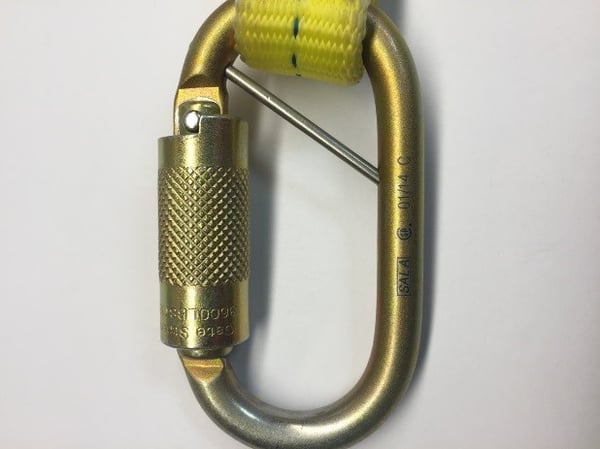 The self-locking gate is rated at 3,600 pounds—date of manufacture is 01/14
The self-locking gate is rated at 3,600 pounds—date of manufacture is 01/14
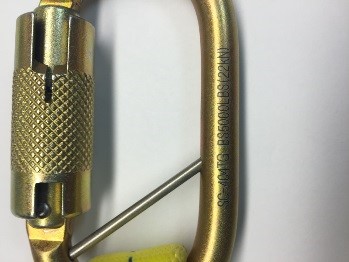 The body of the carabiner is rated at 5,000 pounds
The body of the carabiner is rated at 5,000 pounds
The older carabiner MAY have been OSHA compliant at some point, but we can’t say this with certainty. Common sense also tells us that even if the carabiner met the 5,000 pound loading requirements at the date of manufacture, it is now unsafe.
Your employees SHOULD inspect their fall protection equipment prior to each use, and one would hope (and assume) someone would have tagged out the old carabineer, but this didn’t happen. Our inspector pulled the connecting device from service. Ask yourself a few questions:
- Would all of your employees spot a non-compliant carabiner?
- Would your personnel recognize that corrosion has severely compromised the strength of a connecting device?
- Would your workers tell you they have a problem with a critical component of their system?
- Would you have spotted the problem yourself?
Here’s another example of an altered system discovered during an inspection. From a distance, you might not pick up on the unsafe connections:
On closer examination, you can see that there is no shuttle on the horizontal lifeline—a rope is looped and knotted on to create the first connection. A snap hook should be used to make this connection.
The terminal end of the rope grab is also unsafe. Instead of using a snap hook, someone has knotted the rope grab to a self-retracting lifeline (SRL).
One would hope that common sense would prevail and someone would question the safety of this system, but do you want employee safety riding on what you hope will happen? The rope grab is normally connected to the lifeline with either with a snap hook (assuming there are no intermediate posts requiring by-pass) or to a shuttle as shown below:
Just looking at the alterations to the lifeline raises a number of additional questions:
- Is the SRL shown rated for leading edge use?
- Did the employee who made the modifications to the lifeline receive formal training in the proper use of PPE?
- Why was the lifeline modified?
- Did anyone else know an employee or contractor had made unsafe alterations to the fall protection system?
If your employees have received training on safe use of their PPE and engineered fall protection systems, the expectation is that they can (and will) report potentially unsafe conditions to their immediate supervisors. That said, your supervisors and their direct reports don’t possess the same degree of expertise as an individual with specific training in fall protection systems.
For all of these reasons, we recommend having a fall protection company inspect your systems on an annual basis. Remember, the costs associated with annual inspections of engineered fall protection systems and PPE pale by comparison to the financial losses your company will experience if a system fails while arresting a fall. To learn more about the inspection of fall protection equipment, or to arrange a site visit and inspection, contact Diversified Fall Protection for further assistance.
Schedule an assessment with Diversified Fall Protection
Contact Us to request a fall safety review

b-1.jpg?width=1368&height=1340&name=Rail%20(175)b-1.jpg)

